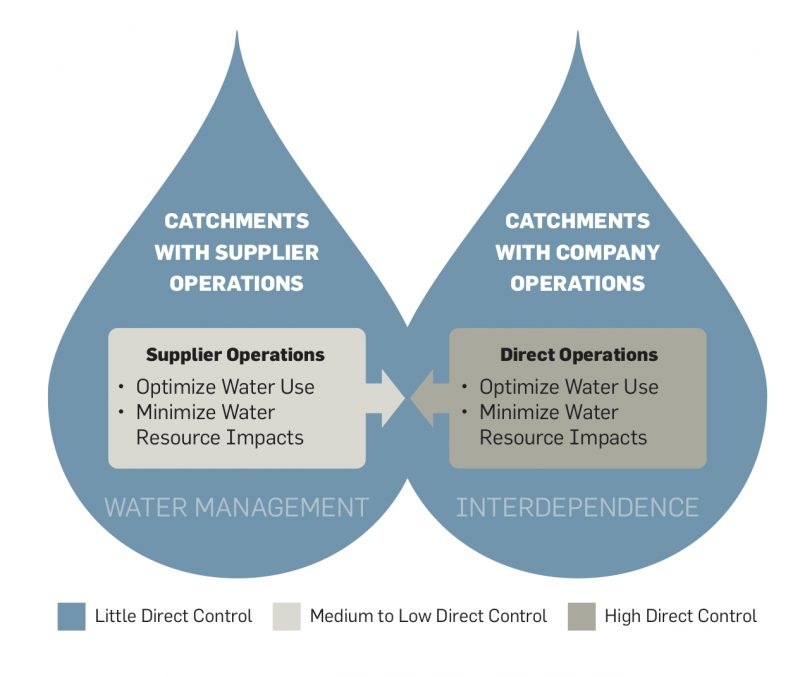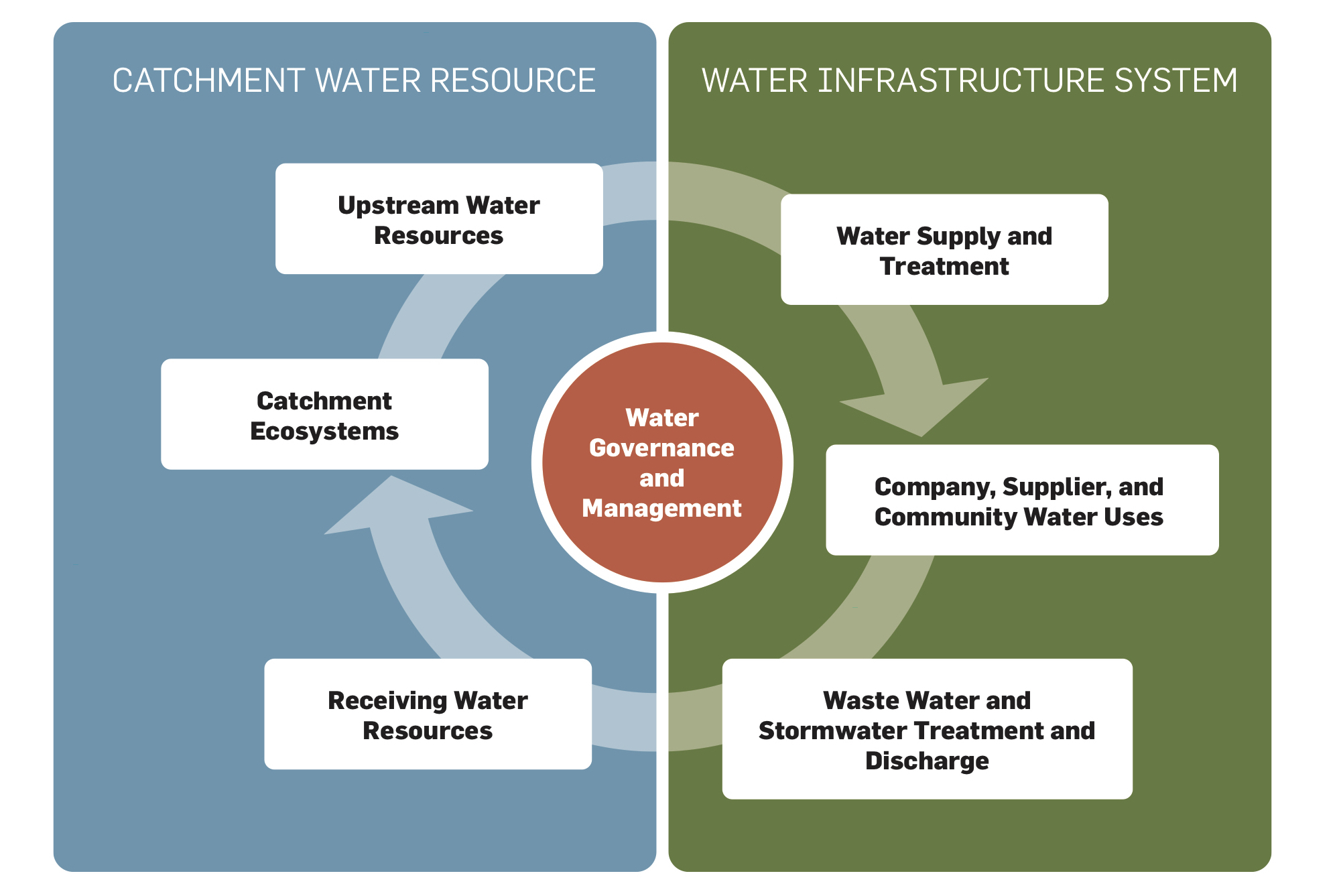Companies that make the strategic decision to manage water-related risks or seek stewardship opportunities often do so to:
- Ensure business viability by preventing or reacting to operational crises resulting from the inadequate availability, supply, or quality of water or water-dependent inputs in a specific location;
- Retain their local legal or social license to operate, or gain competitive advantage, by demonstrating to interested parties and customers that they use and share a precious natural resource responsibly, with minimal impacts on communities or ecosystems;
- Assure investors, financiers, and other stakeholders that water risks, particularly those occurring beyond the factory fence line, are adequately addressed; or
- Uphold corporate values and commitments related to sustainable development by contributing to the well-being of communities and the health of ecosystems and catchments in which they operate.
Collective action is desirable when the ability to produce these outcomes is not possible through internal or unilateral action. The CEO Water Mandate’s Corporate Water Disclosure Guidelines puts forth a framework for how corporate water management efforts typically evolve and mature over time. It suggests that company water stewardship efforts commonly begin with a focus on internal operations, but as water management practices mature, companies often look to promote water stewardship throughout the value chain and to pursue collective action with external parties.
From the starting point of focusing on direct operations, a company may branch out along a number of pathways. It may focus on:
- its supply chain (where many companies find significant water-related risks or opportunities), or
- target efforts in the catchments in which key facilities or suppliers are situated.
In these contexts, a company typically has less control over water management risks and opportunities and must depend on the support of other parties to achieve water-related objectives.
Company Water Management Domains and Degree of Direct Control

Freshwater management has certain multifaceted and unique characteristics that shape collective action. Water is required for life; it supports community livelihoods and sustains ecosystems. It is also viewed by many as a commodity that enables economic production and consumption. The use of water is inherently subject to public-good expectations and can easily raise sociopolitical tensions, particularly when a use or waste discharge has, or is perceived to have, negative impacts on local communities or ecosystems.
These situations require cooperation—and sometimes compromises—among interested parties. . “Integrated water resources management” (IWRM) has emerged as a widely accepted paradigm for balancing water demands with available supplies, and it places substantial emphasis on the equitable engagement of all parties vested in water access, use, and management.
Water Resource Management Cycle

Collective action that emerges from such contexts will need to be driven by objectives tied to catchment-level outcomes, as this is the scale at which water-related risks and sustainability opportunities manifest. At times, a business may seek engagements at the regional, national, or global level to create an enabling context for successful catchment-level initiatives.
Effective collective action provides an array of substantial benefits to businesses. These benefits emerge directly from a “shared risk, shared responsibility, and shared benefit” framework whereby problems that pose a risk to businesses, society, governments, and ecosystems can best be addressed through joint efforts that generate common understanding, strategies, and solutions. The potential benefits of managing water-related risks or capturing water stewardship opportunities through acting with others must, however, be balanced by the potential challenges and complexities of sharing information, consulting others, making joint decisions or commitments, and sharing responsibility for implementation.
|
Key Benefits of Effective Collective Action |
|
Clear articulation of problems (a more robust understanding and connection to water management challenges and realities), shared ownership of solutions, and clarity of joint purpose |
|
More informed decision making by the business initiator and other parties to the engagement |
|
Broader scope and depth of motivation and momentum in support of water-related improvements |
|
An expanded pool of expertise, capacity, or financial resources focused on fostering change |
|
More durable outcomes with strong support from the engaged parties |
|
Establishment and maintenance of credibility and legitimacy with key interested parties, resulting in improved legal and social license to operate |
|
Stronger, more sustainable water governance by engaging multiple stakeholders, including water users |
Collective action will be most successful when tailored to the motivation and capacity of all engaged parties, as well as to the context in which the action occurs.
Sharing information (informative collective action) – This engagement level focuses on coordinating the sharing of information in the interest of expanding knowledge and increasing transparency, familiarity, and trust among interested parties.
Seeking advice (consultative collective action) – This engagement level focuses on convening specific interested parties to exchange ideas and expertise and to create a shared understanding of needs, interests, and challenges in order to enable informed, independent decision making by all parties.
Pursuing common objectives (collaborative collective action) – This engagement level seeks to move interested parties closer together and reflects a belief that finding common ground, establishing common objectives, and sharing implementation responsibilities hold the potential to increase both individual and collective effectiveness.
Integrating decisions and resources (integrative collective action) – This engagement level emerges when an alignment of interests, resources, decision making, and coordinated actions is desired or needed to meet water-related challenges or opportunities. In integrative collective action, interested parties are typically formally convened or have a formal joint structure—for example, as a partnership governed by a memorandum of understanding.

